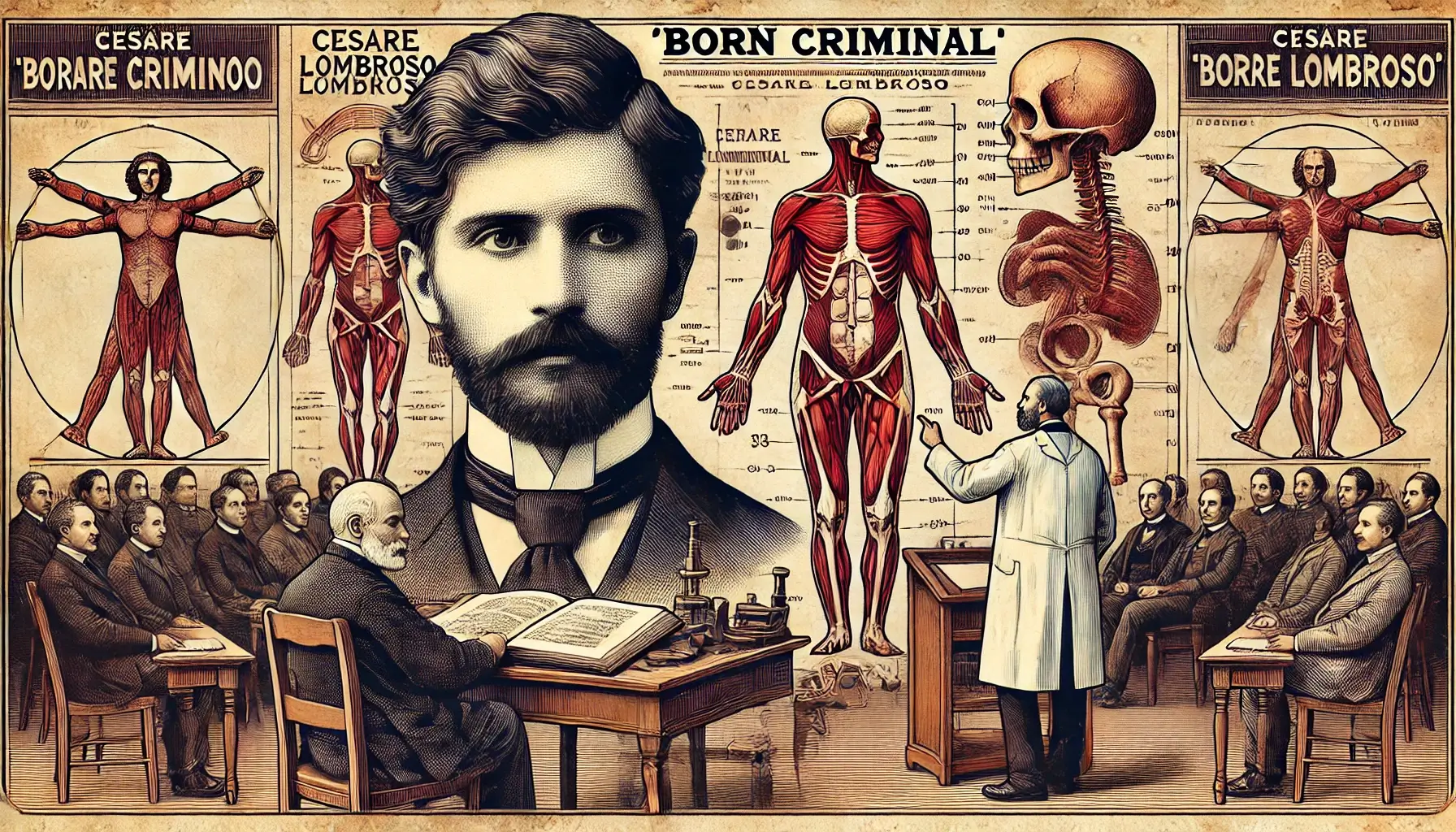The Formative School represents a pivotal paradigm in criminology, emphasizing the exploration of criminal behavior through biological, psychological, and sociological lenses. Emerging as a response to classical theories, this school of thought bridges scientific rigor with practical applications. By examining the origins and evolution of criminal tendencies, the Formative School has significantly contributed to understanding, predicting, and mitigating criminal activities. This article delves into the two primary branches of the Formative School: the Classical Formative School and the Modern Formative School, analyzing their theories, contributions, and relevance in contemporary criminology.
First: The Classical Formative School
1. Cesare Lombroso’s Theory
Cesare Lombroso, often regarded as the father of criminology, pioneered the Classical Formative School with his groundbreaking theory of the “born criminal.” According to Lombroso, certain individuals possess innate biological traits that predispose them to criminal behavior. He argued that these traits, which he termed “atavistic,” were evolutionary throwbacks resembling primitive human ancestors. Lombroso’s methodology included detailed anthropometric studies of criminals, where he identified physical markers such as asymmetrical facial features, a sloping forehead, and excessive jaw size as indicators of criminal propensity.
Lombroso’s work laid the foundation for criminology as a scientific discipline, emphasizing empirical observation and data collection. His theory also inspired subsequent research into the biological underpinnings of criminal behavior, albeit with significant criticisms and limitations.
2. Evaluation of Lombroso’s Theory
While Lombroso’s contributions to criminology are undeniable, his theory faced substantial criticism. Critics argued that his reliance on physical traits to define criminality was overly deterministic and ignored social, psychological, and environmental factors. Additionally, subsequent studies failed to replicate his findings, undermining the scientific validity of his claims.
Despite these flaws, Lombroso’s work was instrumental in shifting criminology from a purely philosophical discipline to one grounded in empirical research. His emphasis on studying criminals’ physiological and psychological characteristics paved the way for more nuanced theories that integrated multiple perspectives.
Second: The Modern Formative School
1. Di Tullio’s Criminal Formation Theory
Building upon the foundations laid by Lombroso, Di Tullio’s Criminal Formation Theory introduced a more holistic approach to understanding criminal behavior. Di Tullio argued that crime results from the interplay of biological predispositions and external influences, such as social and environmental factors. Unlike Lombroso, Di Tullio acknowledged the dynamic nature of human behavior, emphasizing that criminal tendencies are not fixed but can be shaped by life experiences and societal conditions.
His theory marked a significant departure from the deterministic view of the Classical Formative School. By incorporating psychological and sociological dimensions, Di Tullio provided a more comprehensive framework for analyzing criminal behavior. This approach resonated with modern criminological theories, which often emphasize the interaction between individual traits and environmental contexts.

2. Enrico Ferri’s Multifactor Theory
Enrico Ferri, another prominent figure of the Modern Formative School, introduced the Multifactor Theory of criminal behavior. Ferri’s approach emphasized the interplay of multiple factors—biological, psychological, social, and economic—in shaping criminal tendencies. He argued that crime is a product of complex interactions rather than a singular cause, challenging the reductionist perspective of earlier theories.
Ferri’s contributions extended beyond theoretical insights. He advocated for practical measures to prevent crime, such as improving education, addressing poverty, and reforming the penal system. His emphasis on prevention and rehabilitation highlighted the social responsibility of addressing the root causes of criminal behavior, a principle that remains relevant in contemporary criminology.
3. Evaluation of Modern Theories
The Modern Formative School’s emphasis on multifactorial analysis and prevention marked a significant advancement in criminological thought. By integrating diverse perspectives, modern theories provided a more realistic and actionable understanding of crime. However, these theories also faced challenges, such as operationalizing complex interactions and addressing the ethical implications of predictive measures.
Despite these challenges, the Modern Formative School’s legacy endures in contemporary criminology. Its principles underpin many modern approaches, from risk assessment models to community-based prevention programs.
Conclusion
The Formative School, encompassing both classical and modern branches, has profoundly influenced the field of criminology. While the Classical Formative School, spearheaded by Lombroso, emphasized biological determinism, the Modern Formative School introduced a more nuanced understanding of criminal behavior through multifactorial analysis. Together, these schools have shaped the evolution of criminological thought, bridging the gap between theory and practice.
In today’s context, the lessons from the Formative School remain invaluable. By acknowledging the complexity of criminal behavior and advocating for evidence-based interventions, this school of thought continues to inspire efforts to create safer and more just societies. As criminology evolves, the foundational insights of the Formative School will undoubtedly remain a cornerstone of the discipline.

